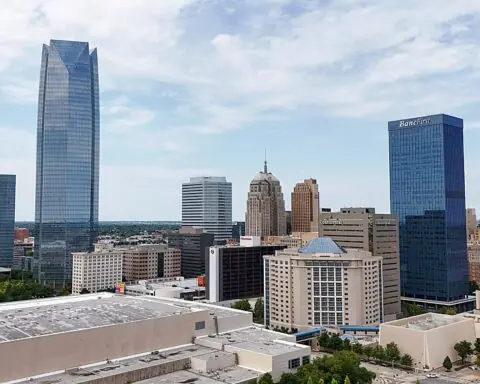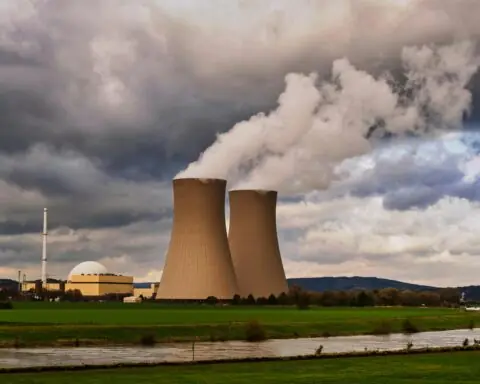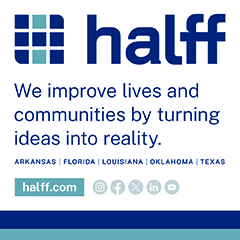The Colorado Office of Economic Development and International Trade (OEDIT) released the state’s first Comprehensive Economic Development Strategy (CEDS) on Sept. 29. The five-year plan was developed in accordance with U.S. Economic Development Administration (EDA) guidelines, making it easier for regions to apply for EDA grants.
The plan incorporates CEDSs from 16 regions across the state, representing all 64 counties and two tribal nations. According to officials, the plan follows the post-COVID-19 “nesting” model from the EDA, which considers needs from all 16 regions to develop a more cohesive statewide strategy.
This approach builds on Colorado’s Blueprint 2.0 economic strategy launched in 2015 and the CO|Align initiative. EDA studies conducted over the past 40 years have shown that grants awarded to regions with comprehensive economic development plans produce more successful outcomes. The Colorado Resiliency Office (CRO) partnered with the OEDIT to ensure regional and statewide CEDSs align with the Colorado Resiliency Framework.
The statewide CEDS highlights five major strategic themes:
- Housing.
- Job creation and business development.
- Growing key industries.
- Tourism and quality of life.
- Community infrastructure and resources.
Colorado faces a housing shortage with a 2024 median home price of $606,800, according to the plan. In 2022, voters passed Proposition 123, which authorized about $300 million in annual funding. The OEDIT receives roughly $180 million of that figure yearly.
The plan calls for the state to partner with housing authorities, municipalities, developers and philanthropic agencies to create housing options for all income levels. Officials said they will leverage federal and state funding to increase local housing supply, support the modular construction industry and promote transit-oriented development in metro regions with heavy commute times.
Colorado received a $92 million Opportunity Now grant to train Coloradans for 20,000 in-demand, high-wage jobs through collaboration with industry and education partners. The state also launched Regional Talent Summits in early 2025, bringing together state and regional partners to develop workforce retention plans and address labor shortages. The strategy outlines plans to expand apprenticeships and on-the-job training programs, as well as provide advisory services to small businesses and increased access to capital to attract top companies and talent.
To grow key industries, including aerospace, energy and technology, officials said they will strengthen coordination across economic development and workforce development programs. The state’s Elevate Quantum coalition was designated by the EDA in 2024 as one of 12 Regional Technology and Innovation Hubs under the CHIPS and Science Act. This unlocked funding of up to $900 million to develop the state’s quantum technology ecosystem.
Through the Opportunity Now program, the OEDIT announced in April 2025 that Swisspod, a high-speed hyperloop transportation company, is expanding operations in Colorado Springs. Planners also outlined goals to cultivate a modernized energy ecosystem, with 60% projected growth in wind energy jobs through 2033.
Tourism and outdoor recreation generated $28.2 billion in traveler spending in 2023, supporting 187,710 jobs, according to the plan. The state also secured the Sundance Film Festival’s move to Boulder in early 2025.
However, Colorado faces increasing disaster risks, with four of the top five largest wildfires in the state occurring within the last seven years. The plan projects drought-related damages will reach $830 million annually by 2050. The CRO, established after 2012 wildfires and 2013 floods, will work to enhance disaster preparedness and strengthen tourism industries against future events. According to the plan, Colorado is one of only 12 states with an established state resiliency office.
The plan calls for supporting strategic and community-prioritized infrastructure projects, including enhanced broadband access, mobility, transportation, job growth and business development. Officials also plan to increase access to community services such as childcare, healthcare and education.
Among these infrastructure priorities, Colorado is expanding the Front Range Passenger Rail project to connect Pueblo, Colorado Springs, Denver, Boulder and Fort Collins. The state received $93 million in federal and state funding in October 2024 as an initial investment. Officials also launched a Freight Rail Tax Credit program in 2025 offering up to $5 million annually through 2036 to support rail lines in coal transition communities. The strategy notes that the state faces a water supply gap of up to 740,000 acre-feet by 2050 and calls for strengthening infrastructure for water and energy.
This five-year strategy positions Colorado to compete for federal EDA grants while tracking progress through annual evaluation metrics. With all 16 regional CEDSs now completed and in implementation for the first time, officials said the nested approach creates a foundation for coordinated economic development across urban, suburban and rural communities through 2030. Colorado is also updating the Resiliency Framework in 2025 to emphasize cross-agency action addressing economic challenges.
Photo by M I N E I A M A R T I N S from Pexels













